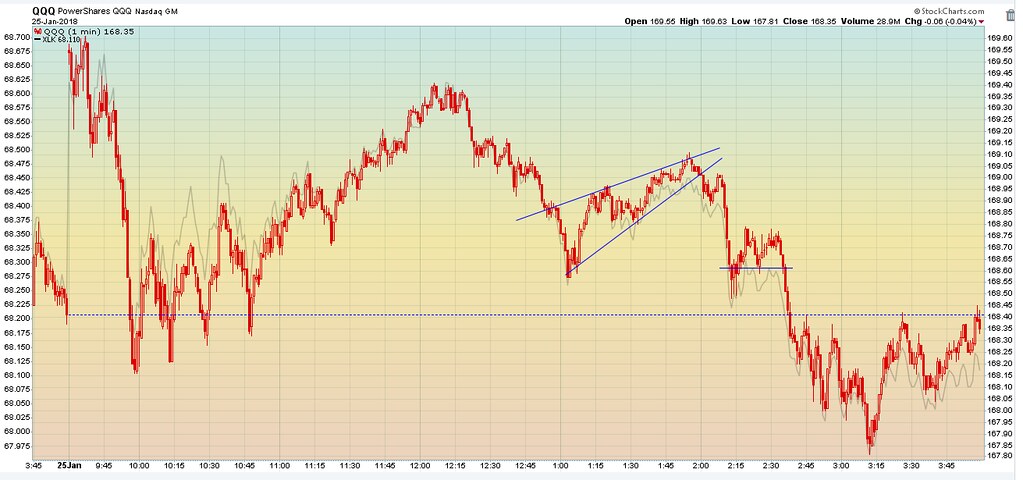I don't make any trade decisions off any chart patterns but this site provides really detailed analysis and statistics if that's the way you do it -
http://thepatternsite.com/index.html.
Here's a thought tomorton. Chart patterns basically display the 'Psychic' of the traders. ie: Bears pushing going down.
Bulls jump in and think it's time to make a profit by pushing prices up. Bears jump back in an say "I'm short for a reason and force prices to dip back down, only not quite as far as the last push down. Then,... Bulls jump back in and retake control of the prices. It is interpreted like this.
1st down turning point is #1
1st Rally peak is point #2
2nd down turning point (Not as far as the 1st down turn) is called #3
Trade entry is off the #2 point Place a GTC buy off of the, or a few ticks above the #2.
It's a classic 1-2-3 chart/price pattern That fits Bottom and Top of a price run.
Also note the 'BULL' flag following the 123 pattern. An UP Move At the Break out above the pole can advance the length of the pole; not an absolute but a good indicator for a move.
These all have excellent entry points.
another note. These patterns work just as well for a down moving market.


